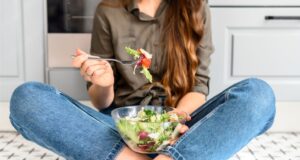Nothing with “off in the bin”! We’ll show you how you can use leftovers cleverly and thus throw away a lot less food in the future
Do you know how much food ends up in the trash every day? Far too much, more precisely 82 kilograms on average per person per year. Hard to imagine, right? But reality.
The worst thing about it: Much of it doesn’t even have to go into the bin. Some can be wonderfully processed and recycled. Do not you think? We’ll show you how.
What can be done against food waste?
We don’t want to be a moral post. But the fact that so much food is thrown away every day should make everyone think. The increasing food waste will not simply vanish on its own. Recycle instead of throwing it away has long ceased to be an eco-behavior, but a sign of responsible food handling.
However, not only your conscience is happy about using leftovers, but also your stomach: Leftovers from the day before can be easily warmed up, which saves you a lot of time. For lunch to go you simply pack it in a lunch box and you can also look forward to a delicious meal in the office.
This also benefits your wallet. Not only because you save the costs at lunch, but also because you have to go shopping less thanks to the clever use of leftovers. Because everything that you recycle doesn’t have to be bought again.
What to do if the best before date has passed?
Before you dispose of food immediately, you should ask yourself whether there is still a way to process it further. This also applies to food that has expired. The specified date is simply a best-before date (short: best before date), which does not mean that it is no longer good a day or two later. But if the color, taste, smell or consistency have changed, or if you can even see mold, you should definitely stop eating it.
But be careful: There is usually no best before date for meat, but a so-called use-by date, which means that the food must actually be consumed by the specified date and should not be eaten afterwards.
How do leftovers stay fresh for a long time?
Most leftovers can be stored in the refrigerator without any problems. To keep them fresh, it’s best to pack them in airtight storage jars or jars. Transparent film is suitable for cut vegetables. If you want to do without plastic, get reusable beeswax cloth, which you can now buy in every drugstore.
Instead of storing leftovers in the refrigerator, many dishes can also be frozen and defrosted if necessary. If you want to overcook individual food leftovers but don’t know how, you can stop by restegourmet.de, for example. There you indicate what your refrigerator and pantry still have and you will receive the appropriate recipe suggestions that you can cook immediately.
App tip from our food editorial team: Too good to go
With the free app you can save groceries in your area from the bin for little money. Bakers, supermarkets, fruit and vegetable shops or restaurants – many companies are now taking part and selling leftover food at a friendly price.We love it and use the app regularly.
How can you use leftovers cleverly? 9 tips
Leftover recycling works without any problems – and is even really tasty if you know what to do. You can use this leftover food very well, it definitely doesn’t belong in the bin.
1. Leftover fruit for smoothies, nice cream or puree
One day too long and the fruit is brown. It no longer looks appetizing, but is still no reason to throw it away. Brown bananas are super sweet and are therefore particularly popular for juicy banana bread. Here is the recipe:

You can even freeze them cut into slices to conjure up delicious nice cream later. This is how you make the healthy banana ice cream yourself . Incidentally, freezing also works with other types of fruit such as berries or mango.
Water-based fruits such as watermelon or grapes, on the other hand, should be cleaned quickly. Otherwise, fruit leftovers can be wonderfully pureed into a smoothie. You can also bring apples and pears to a boil with a little water, cinnamon and possibly some agave syrup or coconut blossom sugar, puree them, process into puree and store in jars.
2. Hard rolls become breadcrumbs
Instead of buying breadcrumbs, you can easily make them yourself from hard rolls. Crushed or grated in a blender, the homemade breadcrumbs can be stored dry and stored forever. The dry, crumbled bread can then not only be used for classic breading, but also as a crust over casseroles, as a basis for (bread) dumplings, to tie sauces or as croutons.
Refined with a little olive oil, stale bread even becomes the crunchy base of bruscetta. You can also use it for sweet bread casseroles or the famous “poor knight”.
3. Meat and fish leftovers as cold cuts
Leftovers from fried fish and meat are cut open for a quick meal for the next day. As a sandwich, in a wrap or in a salad, your lunch is saved with it. Otherwise you might get a turkey breast wrap, roast beef sandwich or a fish sandwich at the restaurant around the corner anyway. So why not just do it yourself?
Of course, hot dishes can also be conjured up from meat and leftover fish. How about a creamy salmon and spinach pasta or noodles with strips of beef fillet?
4. Broccoli and cauliflower drinks for soups and purees
Do you always throw away broccoli and cauliflower stems? Then you throw almost half of what the healthy cabbage varieties offer in the trash. Because the stalk is at least as valuable as the florets. However, you should remove woody areas before preparing.
If cooking is too suspicious for you, you should try a soup or puree. To do this, you cut the broccoli or cauliflower stalk into small pieces, boil it in broth until soft and then puree it. Season to taste with spices and stir in coconut milk or cream as desired.




